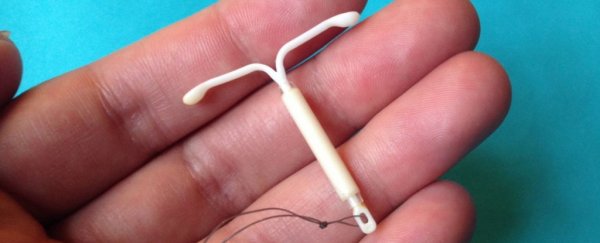The story goes that after the last presidential election in the United States, American women decided they could no longer take their reproductive rights for granted.
In the weeks following Donald Trump's unexpected victory, doctors around the country reported an increased demand for long-acting, reversible contraception, such as intrauterine devices (IUDs) and implants.
These little plastic contraptions may not look like much, but they are some of the most reliable contraceptives women can get their hands on. Not only is an IUD 99 percent effective against pregnancy, depending on the type, it can also last up to 12 years.
For many, the explanation seemed obvious. If President Trump managed to fulfil his promise of repealing and replacing Obama's Patient Protection and Affordable Care Act (ACA), birth control could be a lot more expensive for many American women to come by.
Without insurance, an IUD can cost an American woman up to US$1,300, according to Planned Parenthood.
So, as the Daily Beast put it, women should get an IUD before it's too late.
Yet motive or no, for a while the only evidence for this spike in demand were descriptions. In other words, there was no hard data to tell whether the whole thing was apocryphal or not.
Now, investigators at Brigham and Women's Hospital in Boston are the first to crunch the cold hard numbers. Using data from over three million commercially insured women, these experts tracked birth control trends in the 30 days before and the 30 days after the 2016 election.
The team then compared their results to the same time period from the previous year, making sure to cover for seasonal fluctuations in birth control demand or other normal factors.
In 2015, the year before the presidential election, the researchers found that the use of long-term birth control stayed relatively flat. But in 2016, they noticed a bump.
In the 30 days following the election, the daily rate of insertions jumped by an impressive 21.6 percent, which means that for a month at least, doctors were inserting about 2.1 additional IUD's or implants per 100,000 women every day.
"If our findings were projected to the approximately 33 million women in the US in this age range with employer-sponsored health insurance, this would correspond to 700 additional insertions per day in association with the 2016 election," says corresponding author Lydia Pace, a primary care physician and expert in women's health at Brigham.
"The changes in rate that we report here could reflect women's concerns about losing contraceptive coverage under the Trump administration."
While we can't know for sure (these are just correlations after all), the findings at least seem to match the popular narrative.
In the end, this may not be simple gossip, fake news or divisive politics. Instead, the numbers suggest that, like the Women's March, it's another example of American women fearing for their rights.
"Our study tells us something important about women's health preferences in a changing political climate," says Pace.
"Women responded to this political event by seeking out this method of contraception, perhaps because the threat of losing access expedited a decision or encouraged them to seek out a method they hadn't previously considered."
This study has been published in JAMA Internal Medicine.
